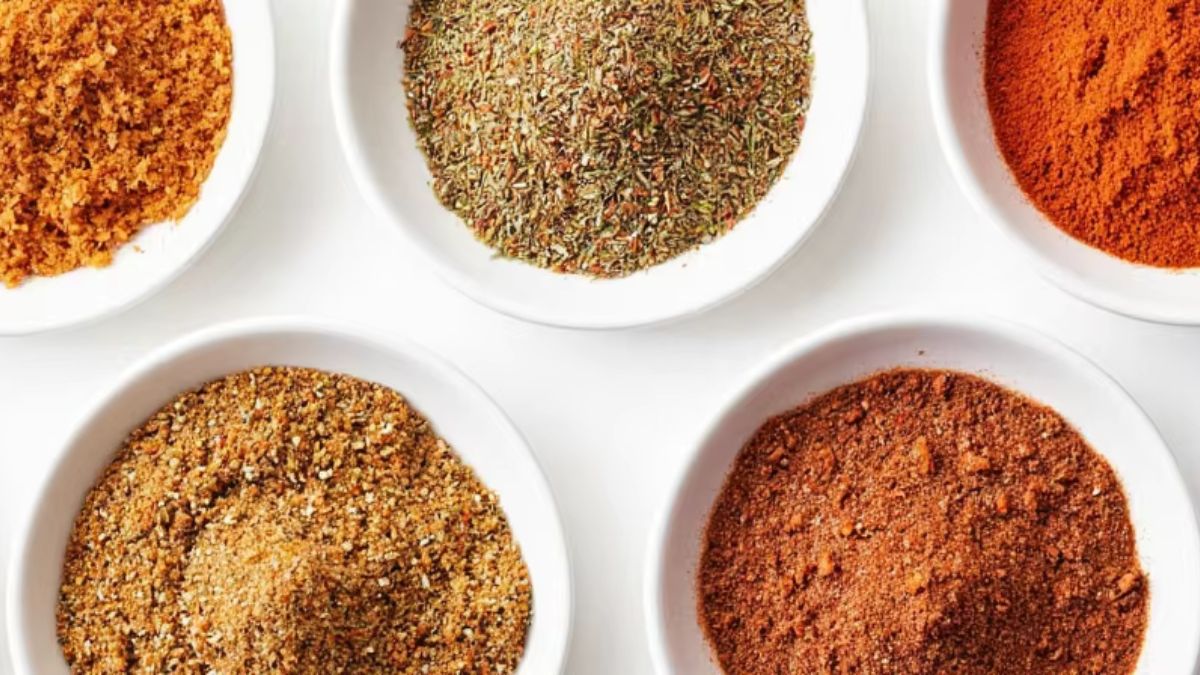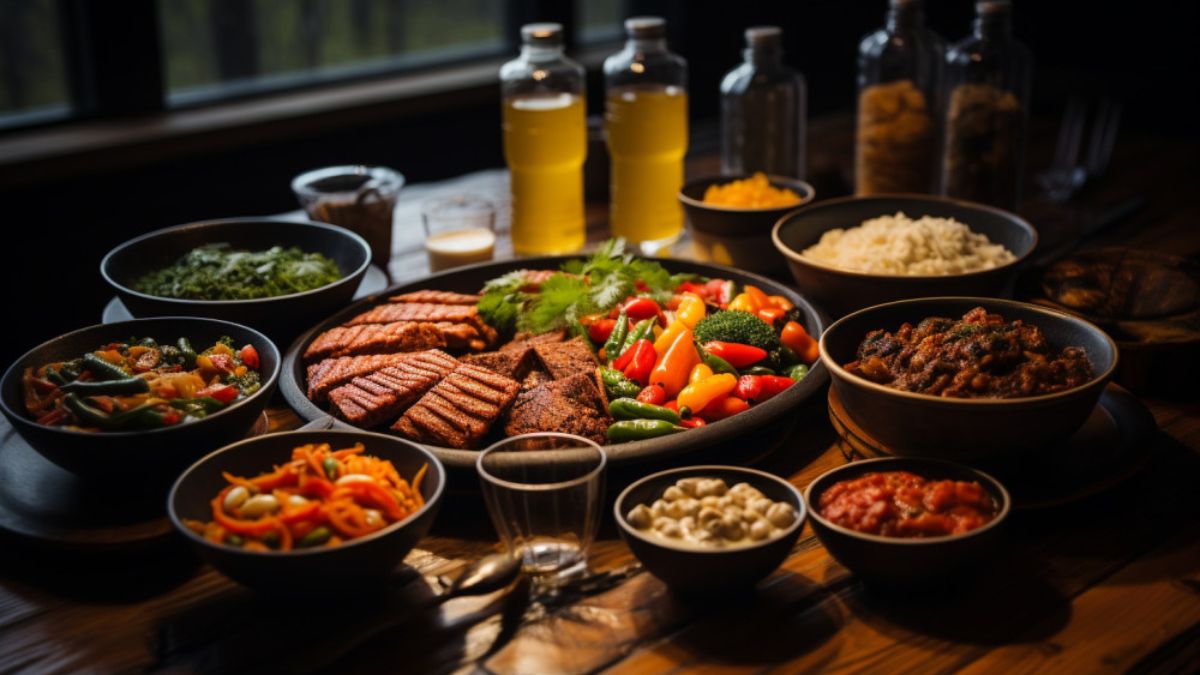FOOD
Nduja: The Spicy and Spreadable Salami

When it comes to Italian cuisine, few foods bring the same level of intrigue and flavour as Nduja. This spicy, spreadable salami hails from the southern region of Calabria and has grown in popularity worldwide thanks to its bold flavours and versatility. Whether you’re spreading it on crusty bread, mixing it into sauces, or using it as a pizza topping, Nduja adds a unique, fiery kick to any dish.
At Papandrea, we specialise in crafting authentic Italian cured meats, and our Nduja is no exception. Here’s everything you need to know about this delectable spreadable salami and how you can incorporate it into your cooking.
1. What is Nduja?
Nduja (pronounced “en-doo-ya”) is a type of salami made from pork, Calabrian chilies, and a blend of spices. What sets Nduja apart from other cured meats is its soft, spreadable texture and its intense spiciness. Traditionally, it’s made with fatty cuts of pork, including the shoulder and belly, which are mixed with fiery red chilies from Calabria, one of the hottest regions in Italy, both in temperature and flavour.
Unlike traditional hard salami, Nduja has a rich, creamy consistency, making it easy to spread and blend into a variety of dishes. Its deep red colour and bold flavour make it a standout ingredient in any kitchen.
2. The Origins of Nduja
Nduja originated in the small town of Spilinga in Calabria, a region known for its love of spicy food. The word ‘Nduja’ is thought to derive from the French word “andouille,” which refers to a type of sausage. The origins of Nduja can be traced back to the 13th century, when poorer communities would use every part of the pig, incorporating pork fat and leftover cuts into a spicy sausage mixture that could be easily preserved.
Over the centuries, Nduja has become a staple of Calabrian cuisine, known for its fiery heat and complex flavours. Today, it’s celebrated not just in Italy, but across the world, as chefs and food lovers have discovered its versatility.
3. How to Use Nduja in Cooking
One of the best things about Nduja is its versatility in the kitchen. Its spreadable texture and bold flavour make it an ideal ingredient for a variety of dishes. Here are some popular ways to use Nduja:
- Spread it on Bread: The simplest and most traditional way to enjoy Nduja is spread on crusty bread or toast. It can be served as part of an antipasto platter or enjoyed on its own as a quick snack.
- Add it to Pasta: Nduja melts beautifully when heated, making it the perfect addition to sauces. Stir it into your favourite pasta dish for a spicy kick and a depth of flavour that will elevate even the simplest recipes.
- Top Your Pizza: Take your pizza game to the next level by adding dollops of Nduja as a topping. Its spicy, creamy texture pairs wonderfully with traditional pizza ingredients like mozzarella, basil, and tomatoes.
- Use it in Sauces: Nduja can add richness and heat to soups, stews, and sauces. A small spoonful is enough to transform your dishes with a smoky, spicy depth of flavour.
- Mix it with Eggs: For a fiery breakfast or brunch, mix Nduja into scrambled eggs or fold it into an omelette. It also works well as a filling for breakfast sandwiches or frittatas.
4. The Flavor Profile of Nduja
The flavour of Nduja is intense, spicy, and smoky, with a rich, savoury finish. The Calabrian chilies used in the salami give it a fiery heat that’s balanced by the natural sweetness of the pork fat. It’s not just about the heat, though—Nduja also has a complex, umami-rich flavour that makes it a versatile ingredient in both simple and more sophisticated dishes.
Because of its intense spiciness, a little Nduja goes a long way, and it can easily become the star of any meal.
5. Where to Find Authentic Nduja
At Papandrea, we take pride in producing authentic Nduja using traditional Calabrian methods. Our Nduja is made with the finest quality pork and Calabrian chilies, ensuring a deliciously bold and spicy flavour in every bite. Whether you’re looking to add a touch of heat to your cooking or you simply want to experience one of Italy’s most beloved cured meats, our Nduja is the perfect choice.
You can explore our range of Nduja and other delicious cured meats on our website at Papandrea.
6. How to Store Nduja
Because of its high fat content, Nduja can be stored at room temperature for short periods, but it’s best kept in the refrigerator for longer-lasting freshness. Once opened, it should be wrapped tightly in plastic wrap or stored in an airtight container to prevent it from drying out. Properly stored, Nduja can last for several weeks, and the flavour will only intensify as it matures.
Experience the Bold Flavors of Nduja with Papandrea
Whether you’re new to Nduja or a longtime fan of this spicy spreadable salami, there’s no denying its ability to enhance any meal. At Papandrea, we bring you the finest quality Nduja, crafted with care and tradition, so you can enjoy the true flavours of Calabria in your home.
Visit our website at Papandrea to explore our range of authentic Italian cured meats and find the perfect Nduja to spice up your next meal.
FOOD
From Basics to Gourmet: Mastering Camino Seasoning for Every Dish

Introduction to Camino Seasoning
If you’re looking to elevate your culinary creations, look no further than camino seasoning. This vibrant blend of spices can transform ordinary dishes into extraordinary experiences. Whether you’re a novice cook or a seasoned chef, mastering camino seasoning opens up a world of flavor possibilities. Imagine adding richness and depth to everything from simple weeknight dinners to gourmet meals that impress guests. In this blog post, we’ll take you on a flavorful journey—from the origins of camino seasoning to its versatile applications in everyday cooking and beyond. Get ready to unleash your inner gourmet!
History and Origins of Camino Seasoning
Camino seasoning has a rich tapestry of history woven through diverse culinary traditions. Originating from Latin America, it reflects the vibrant flavors and cultures found across various regions.
The term “camino” translates to “path” in Spanish, symbolizing a journey of taste. Traditionally used by indigenous communities, these spices were integral to their daily meals and rituals.
Over centuries, camino seasoning evolved as it mingled with European influences during colonization. Ingredients like cumin, coriander, and garlic became staples in households.
Today, this seasoning embodies fusion cuisine. It connects traditional recipes with modern cooking techniques. Chefs worldwide embrace its versatility for both everyday meals and gourmet creations.
This dynamic blend continues to inspire home cooks seeking authenticity while exploring new flavor horizons. Each pinch carries the essence of generations past—celebrating heritage through every dish prepared.
Types of Camino Seasoning and Their Uses
Camino seasoning comes in various forms, each designed to enhance different dishes. The classic blend typically includes garlic, onion powder, cumin, and paprika. This versatile mix is fantastic for meats and vegetables alike.
For a more herbaceous flavor, the Italian-style camino seasoning incorporates oregano and basil. It shines in pasta sauces or sprinkled over pizza before baking.
A smoky variant adds chipotle or smoked paprika into the mix. It’s perfect for barbecue dishes or to give roasted vegetables a depth of flavor that dances on your palate.
For those who love spice, there’s the spicy camino seasoning featuring cayenne pepper and black pepper. Perfect for adding a kick to soups or stews, it brings warmth without overpowering other ingredients.
Each type serves its purpose while enhancing the overall taste profile of your meals effortlessly. Explore these options to find what elevates your cooking style most effectively.
Benefits of Using Camino Seasoning in Your Cooking
Camino seasoning brings a burst of flavor to any dish. Its unique blend enhances the natural taste of ingredients, making meals more enjoyable.
Cooking with this seasoning can save you time in the kitchen. A sprinkle or two infuses your dishes with depth and complexity without needing multiple spices.
It’s also versatile. From meats to vegetables, camino seasoning works wonders across various cuisines. Whether you’re grilling steak or sautéing greens, it elevates every bite.
Health benefits are another advantage. Many blends contain herbs known for their antioxidant properties and ability to boost immunity. So not only do you enhance flavor, but you add nutritional value too.
Incorporating camino seasoning into your culinary repertoire encourages creativity. Experimentation leads to delightful discoveries as you learn how different ratios transform familiar recipes into something extraordinary.
Basic Recipes Using Camino Seasoning
Camino seasoning can transform simple ingredients into delightful meals. Start with a classic roasted vegetable dish. Toss your favorite seasonal veggies in olive oil and sprinkle generously with camino seasoning before roasting them in the oven.
For protein lovers, try marinating chicken or fish. Combine lemon juice, garlic, and camino seasoning for a zesty marinade that adds depth to your dish. Let it sit for at least 30 minutes to infuse flavors.
If you’re craving something quick, whip up a flavorful pasta sauce. Sauté onions and garlic in olive oil, then add diced tomatoes and a dash of camino seasoning. Simmer until thickened for an easy yet satisfying meal.
Don’t forget about soups! Add camino seasoning to elevate the taste of any broth-based soup. It enhances each ingredient’s natural flavor without overpowering them, making your homemade creations unforgettable.
Elevating Your Dishes with Gourmet Camino Seasoning
Gourmet Camino seasoning transforms everyday meals into culinary masterpieces. Its blend of herbs and spices adds depth, making each bite memorable.
Start by sprinkling it on roasted vegetables. The aromatic mix enhances their natural sweetness, creating a delightful side dish that captivates the palate.
For proteins like chicken or steak, marinating with gourmet Camino can yield incredible results. Combine the seasoning with olive oil and lemon juice for an invigorating flavor infusion.
Don’t forget about grains! Mix it into risottos or quinoa salads to elevate these staples from basic to extraordinary.
Even desserts can benefit; consider a pinch in chocolate sauces or caramel for a surprising twist that intrigues the senses.
Incorporating gourmet Camino seasoning opens up endless possibilities, allowing you to experiment and create stunning dishes bursting with flavor.
Tips for Incorporating Camino Seasoning into Different Cuisines
Camino seasoning is incredibly versatile. It can seamlessly enhance a variety of cuisines, turning everyday meals into flavorful experiences.
For Italian dishes, sprinkle it over pasta or mix it into marinara sauce. The combination creates depth and richness that elevates the entire dish.
When cooking Asian cuisine, try using Camino seasoning in stir-fries or marinades for meats. Its unique blend complements soy sauce beautifully, adding an unexpected twist.
In Mexican recipes, incorporate Camino seasoning into salsas and tacos for extra zing. It works well with beans and rice too, infusing them with vibrant flavors.
Don’t forget about breakfast! Mix it into scrambled eggs or avocado toast to start your day on a delicious note.
Experimenting is key. Pairing this seasoning with different herbs can lead to delightful discoveries across various culinary traditions.
Conclusion and Final Thoughts on Mastering Camino Seasoning
Mastering camino seasoning opens up a world of culinary possibilities. Its versatility transforms everyday meals into extraordinary experiences. Whether you’re sticking to the basics or venturing into gourmet territory, this seasoning can elevate your dishes in ways you might not have imagined.
Exploring its rich history and diverse types allows you to appreciate where each flavor comes from. The health benefits add an extra layer of appeal, making it a smart choice for those who value nutrition alongside taste.
With simple recipes as your foundation, you’re ready to experiment and get creative with more complex flavors and gourmet applications. This journey encourages exploration across various cuisines—each offering unique pairings that enhance the natural essence of camino seasoning.
As you incorporate this remarkable blend into your cooking routine, you’ll likely discover new favorites and refine old ones. Embrace the adventure that comes with mastering camino seasoning—it’s about patience, practice, and most importantly, enjoying every bite along the way.
FOOD
Discovering Sufrene: The Hidden Gem of Modern Cuisine

Introduction to Sufrene and its Unique Cuisine
Nestled away from the hustle and bustle of mainstream culinary hotspots lies Sufrene, a hidden gem that is rapidly gaining recognition for its vibrant food scene. This charming destination boasts a unique cuisine that reflects both tradition and innovation. Imagine savoring dishes rich in flavor, crafted with locally sourced ingredients, all while surrounded by breathtaking landscapes. Whether you’re a seasoned foodie or simply someone looking to explore new tastes, Sufrene promises an unforgettable gastronomic adventure. Get ready to dive into the delightful world of Sufrene’s modern cuisine – where every meal tells a story waiting to be discovered!
The History of Sufrene
Sufrene’s history is a tapestry woven from diverse cultures and traditions. Nestled between ancient trade routes, this vibrant destination has seen the influence of various civilizations over centuries.
Early settlers cultivated the land, introducing unique agricultural practices that shaped local cuisine. As time passed, Sufrene became a melting pot for flavors and cooking techniques.
The rise of culinary art in Sufrene can be traced back to its bustling markets. Here, spices were exchanged alongside stories and recipes, creating an ever-evolving food scene.
During periods of conflict and peace alike, food remained a constant source of comfort. Each dish tells tales of resilience and innovation amid changing times.
Today’s chefs honor these roots while crafting modern interpretations that celebrate tradition with flair. The past continues to linger on every plate served in Sufrene’s eateries—an homage to its rich heritage.
Influences on Sufrene Cuisine
Sufrene cuisine is a tapestry woven from diverse culinary threads. Its flavors reflect a rich history of cultural exchanges. The region has welcomed influences from neighboring countries, each contributing unique spices and cooking techniques.
Mediterranean elements are prominent, showcasing fresh herbs like basil and oregano. These ingredients bring vibrancy to many dishes. Additionally, the use of olive oil is central, enhancing both flavor and health benefits.
Local traditions play a vital role as well. Generations have passed down recipes that highlight seasonal produce. This connection to nature fosters an appreciation for local farmers and their harvests.
Moreover, global trends have seeped into Sufrene’s culinary scene. Chefs experiment with fusion cuisines while respecting traditional roots. This blend creates innovative dining experiences that attract food enthusiasts from afar.
Each dish tells a story of resilience and creativity in the kitchen—a reflection of Sufrene’s evolving identity through time.
Signature Dishes and Ingredients
Sufrene’s culinary landscape showcases a vibrant tapestry of flavors that reflect its rich heritage. One signature dish is the “Zesty Herbed Grains,” which beautifully combines local grains with fresh herbs and zesty citrus notes.
Another must-try is the “Slow-Braised Lamb,” marinated in saffron and paired with seasonal vegetables. The tenderness of the meat, infused with spices, tells a story of tradition and care.
Ingredients play a crucial role in Sufrene cuisine. Locally sourced produce shines through, from sun-ripened tomatoes to aromatic garlic. Chefs often incorporate unique elements like wild foraged mushrooms or artisanal cheeses crafted by nearby farms.
Each meal invites diners on an adventure, marrying bold tastes with comforting familiarity. Whether indulging in street food or fine dining options, every bite resonates with authenticity and passion for culinary craft.
A Culinary Journey: Must-Try Restaurants in Sufrene
Sufrene is not just a destination; it’s a feast for the senses. The vibrant streets are lined with eateries that reflect the essence of its unique cuisine.
Start your culinary adventure at L’Atelier de Sufrene, where traditional recipes meet modern techniques. Their signature dish, saffron-infused risotto, offers an explosion of flavor that lingers on the palate.
For those craving something more rustic, La Petite Ferme boasts farm-fresh ingredients sourced from local markets. Each bite transports you to a simpler time and showcases the heart of Sufrene’s culinary roots.
Don’t miss Café des Arts, known for its innovative take on classic dishes. The fusion menu surprises even the most seasoned foodie and invites exploration through taste.
Every corner of Sufrene reveals hidden gems waiting to be discovered. This city celebrates food in all forms—each restaurant telling its own story through flavors and experiences.
Farm-to-Table Movement in Sufrene
The farm-to-table movement thrives in Sufrene, connecting local farmers directly with restaurants and consumers. This approach emphasizes freshness and seasonal ingredients, transforming the culinary landscape.
Sufrene’s picturesque countryside is dotted with small farms that produce an array of fruits, vegetables, and herbs. Chefs take pride in forging relationships with these growers to source the best possible ingredients.
Many eateries highlight their commitment to sustainability by showcasing seasonal menus that change regularly. Diners enjoy unique dishes crafted from what’s available at local markets.
This movement fosters a sense of community as chefs collaborate closely with farmers. It not only enhances flavor but also supports the local economy.
Visitors can savor meals made from ingredients harvested just hours before they hit their plates. The emphasis on quality and locality makes dining in Sufrene a truly authentic experience.
How to Recreate Sufrene Dishes at Home
Recreating Sufrene dishes at home can be a delightful adventure. Start by gathering fresh, local ingredients, as they are the foundation of this cuisine. Seek out seasonal vegetables and artisanal products to capture that authentic flavor.
Next, focus on mastering signature techniques. Whether it’s slow-cooking a stew or perfecting the art of fermentation, these methods enhance depth in your meals. Online tutorials and cookbooks specific to Sufrene recipes can provide guidance.
Don’t shy away from experimenting with spices and herbs unique to the region. A dash of saffron or a sprinkle of za’atar can elevate your dish significantly.
Create an inviting atmosphere while cooking. Put on some music reflecting Sufrene culture, allowing you to immerse yourself fully in the experience as you prepare each delicious bite. With patience and creativity, you’ll bring the heart of Sufrene right into your kitchen.
Conclusion: Why You Need to Visit Sufrene for Its Food Scene
Sufrene is a culinary paradise waiting to be explored. Its unique blend of history, culture, and innovation creates an extraordinary food experience. The vibrant markets filled with fresh ingredients offer inspiration for chefs both local and visiting.
The signature dishes tell stories of the land and its people, each bite revealing layers of tradition and modern flair. Dining in Sufrene goes beyond just eating; it’s about savoring moments shared over a meal.
For those who appreciate farm-to-table dining, Sufrene shines as a beacon of sustainability. Local farms contribute directly to the restaurant scene, ensuring that every dish bursts with freshness.
Whether you’re indulging in classic recipes or trying something new at one of the must-visit restaurants, your palate will thank you. Discovering Sufrene means embarking on a journey through taste—one that’s rich with flavor and passion.
Make your plans now to visit this hidden gem for an unforgettable gastronomic adventure!
FOOD
Oolong Tea vs. Green and Black: Which Brew Is Right for You?

Introduction to Tea: History and Benefits
Tea has a rich and fascinating history that dates back thousands of years. Originating in ancient China, it quickly spread across the globe, becoming a beloved beverage for millions. Today, tea is celebrated not just for its delightful flavors but also for its numerous health benefits.
Among the vast array of teas available, oolong tea stands out as a unique choice that often gets overshadowed by its more popular siblings: green and black tea. Each type offers distinct characteristics and advantages that cater to various tastes and wellness goals.
Whether you’re looking to boost your energy levels or simply enjoy a cozy cup while unwinding after a long day, understanding these three varieties can help you make an informed decision about which brew suits you best. Let’s dive deeper into the world of oolong tea alongside green and black teas, exploring their differences and discovering what might be right for you!
Explaining Oolong, Green, and Black Tea Varieties
Oolong, green, and black teas originate from the Camellia sinensis plant but differ significantly in processing. Oolong tea is partially oxidized, resulting in a flavor that sits between green and black tea. Its leaves undergo withering, rolling, and oxidation to develop complex flavors.
Green tea is minimally processed; its leaves are quickly steamed or pan-fired after picking. This preserves their vibrant color and fresh taste while maintaining high levels of antioxidants.
Black tea experiences full oxidation, which gives it a robust flavor profile. The leaves darken during this process, producing stronger tannins and deeper aromas.
Each variety offers unique characteristics influenced by factors like terroir and production methods. Enjoying these teas allows for diverse tasting experiences that cater to varying preferences throughout the day.
Health Benefits of Each Type of Tea
Oolong tea is celebrated for its ability to boost metabolism and aid in weight management. Rich in antioxidants, it may support heart health by improving cholesterol levels.
Green tea stands out with its high concentration of catechins. These compounds are known for their potential to enhance brain function and reduce the risk of certain cancers. Additionally, green tea can promote fat oxidation during exercise.
Black tea offers a robust flavor alongside several health benefits. It contains flavonoids that contribute to better cardiovascular health and improved gut microbiome balance. Drinking black tea regularly may also help lower blood pressure.
Each type brings unique advantages, making them valuable additions to your daily routine. Whether you prefer the subtlety of oolong or the boldness of black, there’s something beneficial waiting in every cup.
Caffeine Content Comparison
Caffeine content varies significantly among oolong, green, and black teas. Oolong tea typically contains about 30-50 mg of caffeine per cup. This makes it a moderate option for those seeking a gentle boost.
Green tea usually has less caffeine, averaging around 20-45 mg per cup. Those sensitive to caffeine might find this variety more suitable while still enjoying its numerous health benefits.
On the other hand, black tea stands out with higher levels, generally ranging from 40-70 mg per cup. It’s often chosen for that stronger kick in the morning or during an afternoon slump.
When selecting your brew based on caffeine preferences, consider how each type aligns with your daily routine and energy needs. A little experimentation can help you pinpoint which tea suits you best without overwhelming your system.
Taste Profiles and Brewing Methods
Oolong tea offers a delightful range of flavors, often described as floral or fruity with a hint of creaminess. Its semi-oxidation process gives it complexity, making each sip an adventure for your taste buds.
Brewing oolong requires attention to detail. Start with water heated between 190°F and 205°F to preserve its delicate notes. Steep it for about 3 to 5 minutes; longer steeping can enhance the flavor but may also introduce bitterness.
Green tea, on the other hand, is lighter and more vegetal in profile. It’s best brewed at lower temperatures—around 175°F—to avoid losing those fresh grassy tones.
Black tea tends toward rich and robust flavors, perfect for morning rituals. Boil your water fully before brewing; this heavy oxidation brings out deep malty sweetness that many adore.
Experimenting with steep times and temperatures helps unlock new dimensions in each brew you try.
Choosing the Right Tea for Your Preferences and Goals
Choosing the right tea can be a delightful journey. Start by identifying what you hope to gain from your brew. Are you seeking relaxation, energy, or perhaps digestive support? Each tea type offers unique properties that cater to different needs.
Oolong tea, with its balanced flavor and moderate caffeine content, is perfect for those who want an energizing yet calming experience. If you’re after something light and refreshing, green tea might suit you best.
On the other hand, black tea provides robust flavors and higher caffeine levels. It’s great for morning rituals or when you need an extra boost throughout the day.
Consider your personal taste as well. Do you prefer floral notes or earthy undertones? The beauty of exploring teas is finding what resonates with your palate while aligning with your health goals. Allow yourself to experiment; each cup brings new discoveries!
Conclusion: Experimenting with Different Teas for a Well-Rounded Experience
Exploring the world of tea can be a delightful journey. Oolong tea, with its unique characteristics, offers a wonderful alternative to green and black teas. Each variety has its own charm, flavors, and health benefits.
As you experiment with different teas, keep in mind your personal preferences and goals. Are you seeking a boost of energy or perhaps hydration? Do you enjoy floral notes or earthy flavors? The beauty lies in discovering what resonates with your taste buds.
Don’t hesitate to try various brewing methods too. From steeping time to water temperature, these factors can dramatically alter the experience.
Embrace the adventure of tasting oolong alongside other varieties. You may find that blending them into your routine provides not only diversity but also enhances wellness in ways you hadn’t imagined before. Happy sipping!
-

 TECHNOLOGY5 months ago
TECHNOLOGY5 months agoTop 10 Must-Read Stories from Kristen Archives You Can’t Miss
-

 TECHNOLOGY11 months ago
TECHNOLOGY11 months agoSky Bri Net Worth Revealed: How She Built Her Financial Empire
-

 TOPIC1 year ago
TOPIC1 year agoBasement Renovation Contractors: How They Tackle Structural Issues During Renovations
-

 TOPIC7 months ago
TOPIC7 months ago5 Reasons the //Vital-Mag.Net Blog Dominates Lifestyle
-

 TOPIC6 months ago
TOPIC6 months agoTop 10 Articles from the ://Vital-Mag.net Blog That You Can’t Miss
-

 CRYPTO9 months ago
CRYPTO9 months agoCrypto30x.com Review: Is It the Right Platform for You?
-

 BUSINESS5 months ago
BUSINESS5 months agoTraceLoans Explained What You Need to Know
-

 ENTERTAINMENT3 months ago
ENTERTAINMENT3 months agoNHentai.NEF: Navigating the Popular Hentai Archive with Ease
